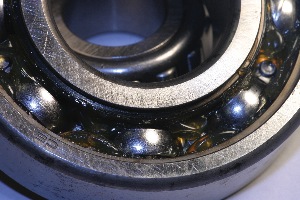While wheel bearing noise is one of the toughest problems for the customer to describe, it’s not unusual for it to come on so gradually that the customer may not even notice it until you mention it after an unrelated road test. Many times, the customer complaint will send you down the wrong path if you let it. We’ve heard complaints from exhaust leaks, to tire balance, to “it just doesn’t sound right,” that have ended up being bad wheel bearings.
Many times, the customer complaint will send you down the wrong path if you let it. We’ve heard complaints from exhaust leaks, to tire balance, to “it just doesn’t sound right,” that have ended up being bad wheel bearings.
When faced with any noise complaints, take the time to test-drive the car with the customer, if that’s possible. This step not only allows you to confirm the noise you’re chasing, but it also gives you the opportunity to point out any other issues that the customer hasn’t noticed. You may hear the familiar knocking sound of loose sway bar links or bushings that the customer will be glad to have repaired once you point out it isn’t too expensive of a problem to fix.
But even if the customer isn’t available, it’s important that you test drive the car before it comes into the bay.
While wheel-bearing noise is pretty easy for most of us to pick out, there are some things we can do to confirm and better pinpoint the problem. Make note of the sound as the load changes around corners; it will give you an idea of which bearing has failed (the noise will usually increase with load).
If any doubt exists, the final step of the diagnostic process is running the vehicle on the lift and pinpointing the problem with a stethoscope.
Important First Steps
While service information outlines the procedure using a press, the tool manufacturers have certainly stepped up and provided some excellent tools that will make the job easier and more efficient. In many cases, it’s a straightforward situation to remove the bearing carrier, making working on a bench a good option.
Be careful with the protective boots on the ball joints and tie rod ends as well as the threads. You also have to be careful with any ABS sensors. If they’re stuck in the housing, it may be a better strategy to leave them in place and unplug them from the harness; and be careful with them as you work on the bench. Techs should think about putting the job back together as they’re taking it apart. It’s easier to clean up the threads on a tie-rod end before it’s removed from its taper than it is later; a couple of extra minutes during disassembly can pay dividends on the other end.
Make sure to look at the hub carrier and knuckle. If the bore is distorted by either a curb strike or on the press, it will cause the outer race to take the shape of the damaged bore. This can cause a bearing to fail prematurely. This can lead to a cycle of comebacks that can cost you a customer.













